
We at Mopar Connection aren’t anything if not helpful, and when we got a call from our friends at Hooker headers asking if we knew of any guys with late model Mopars who’d be willing to let their cars be guinea pigs for a week, we happily made some calls. In order for Hooker to develop its premier line of Blackheart exhaust products, they need to get their hands on bone-stock examples that they can remove the stock exhaust, and test fit their headers, mufflers and tubes (all in varying sizes) so that they can create fabrication jigs from which future products can be built from.
The process can be lengthy, as modern cars not only require several tight and intricate turns, but also include sophisticated sound suppression technology, as well as emissions and engine management controls. In the case of today’s Hemi-powered Mopars (Challengers, Chargers, 300s specifically), Hooker was well aware of the factory AFM valves (Active Fuel Management valve) that closes when the engine is under part throttle and/or MDS cylinder deactivation mode. Additionally, modern catalytic converters and O2 sensors can trigger caution lights if not addressed properly.
Above left: The factory catalyst down pipes with the exhaust removed. From here, the Hooker developers will begin trial-fitting tubes and bends to create the optimal system. Above right: One of the Hooker Blackheart craftsmen in action, hand-forming and fabricating the first prototype components.
Above left: All BlackHeart headers are constructed of lightweight 18-gauge, 304 stainless steel with, according to Hooker, “high flow, long transition collectors featuring merge spears for maximum flow and increased exhaust velocity.” Above center: All Blackheart headers (short or long tube) come with 3/8-inch thick laser cut flanges providing maximum sealing surface for a “leak-free seal and ultimate strength.” Above right: Now finished, the Blackheart production long tube headers ready for packaging.
Above left: The OE AFM valve (Active Fuel Management valve) closes when the engine is in part throttle and cylinder deactivation mode. Above right: The Blackheart 3-inch AFM valve is shown with the factory actuator fitted with thermocouples for temperature profiling. The factory actuators have a maximum operating temperature threshold from manufacturer to prevent them from overheating and failing.
With this in mind, we arranged for a ’12 Dodge Charger SRT8 Super Bee to pull into Hooker’s Bowling Green, KY fabrication and installation shop, who showed us how they measure, test fit, re-test fit, and re-re-test fit in order to get their Blackheart systems and products to fit perfectly each and every time. Equally, Hooker goes through the process to gather temperature profiling, a complex set of time-temperature data used for tuning optimal exhaust performance.
All of this results in a catalog of performance exhaust products that range from the cylinder head flange to the tailpipe, all specifically engineered to produce the maximum exhaust velocity, superior ground clearance, style, performance, and quality. For the ’12 Super Bee, a set of short-tube headers and cat-back exhaust (a system that mates to the factory system behind the OE catalytic converters, and runs all the way to the polished tips) were designed, test-fitted and finalized. This system is part of Blackheart’s 50-state legal smog selections, as it does not interfere with the factory cats.
Above: Blackheart exhaust systems are built using lightweight 1-7/8-inch diameter, 18-gauge, mandrel bent 304 stainless steel for the headers’ primary tubes maximizing strength and durability. All 3-inch diameter tube systems offer superior clearance and Hooker mufflers.
Above left and center: Blackheart protyped their street-use systems with secondary sound suppression tubes beneath the trunk pan. Above right: The systems include angled and polished tips that fit properly within the factory cut-outs.
Above: Unlike other custom exhaust systems, the Blackheart system looks perfectly at home within the factory lower valance, giving this ’11 Charger Super Bee SRT8 a very natural look, as if it came from the factory with 3-inch exhaust.
Next, a set of long-tube headers were created, eliminating the catalytic converters completely, and fitted to a custom H-pipe before concluding in a new true dual exhaust kit with added suppressors. As the first retains the AFM (Active Fuel Management) valve, the second system can be ordered with Blackheart’s 3-inch AFM valve (to work with the factory actuator), or completely without. The ‘Bee served as a template for a 392-equipped four-door LX platform from which other Charger and 300 models could be based upon.
After the test fitting and development process is concluded, Hooker studiously tests the system for performance gains both on the dyno and on the track. Additionally, sound tests are conducted both in- and outdoors for any residual drones or unusual resonance. Sound is almost as important as performance (and in some cases, more!), and Hooker dedicates a large portion of their research and development in creating the right burble at idle and roar at wide open throttle that the car deserves. We’ve included a video from Hooker’s own YouTube channel to illustrate a portion of their audio testing:









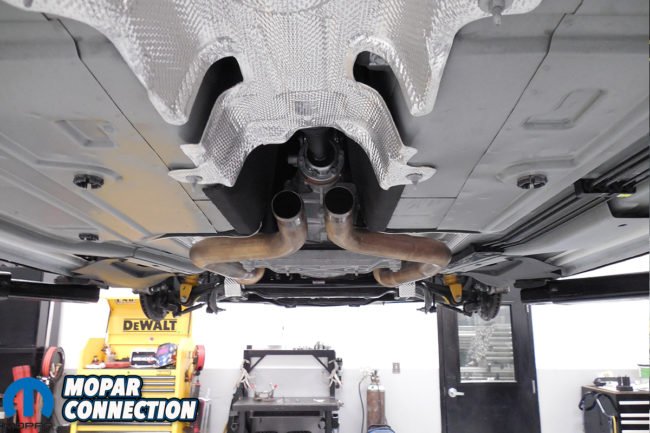

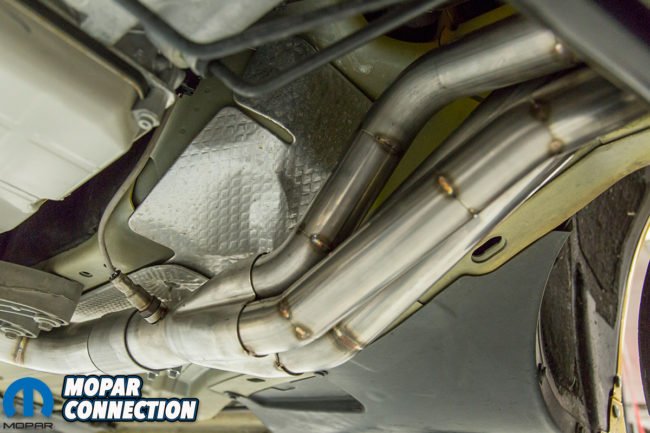



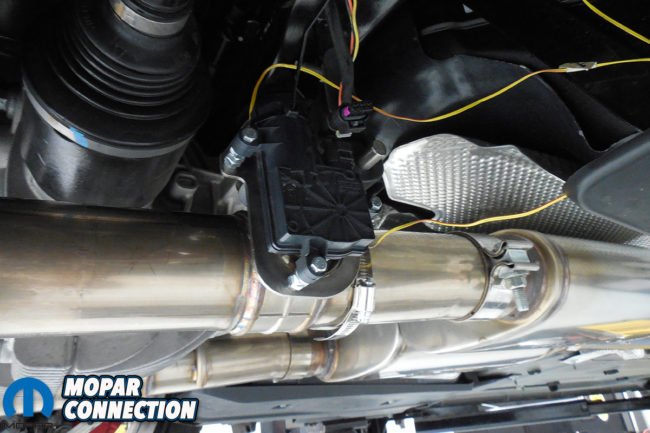
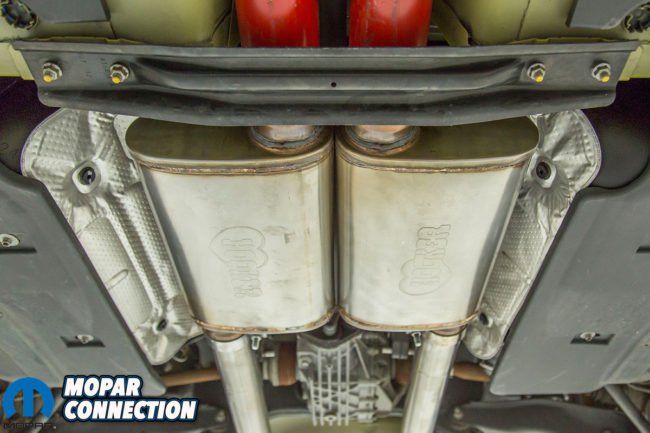
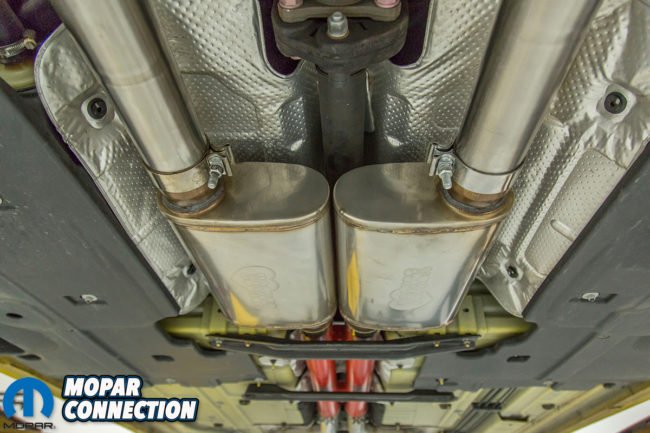
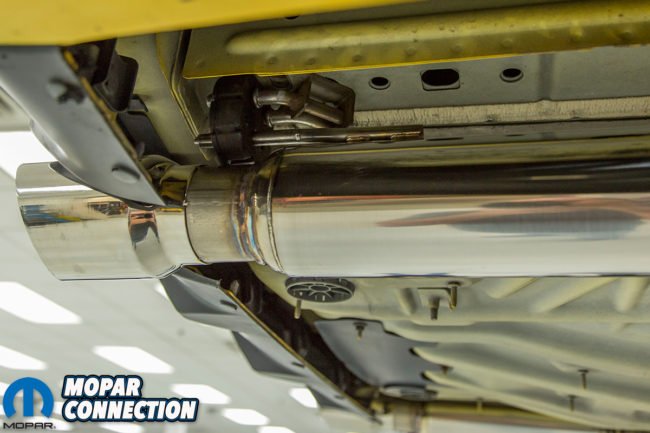
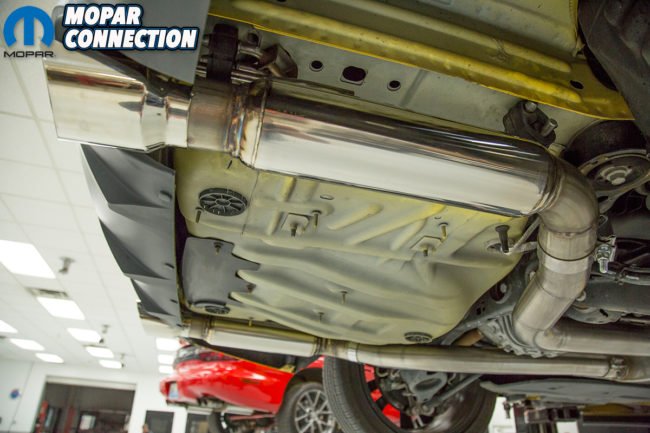

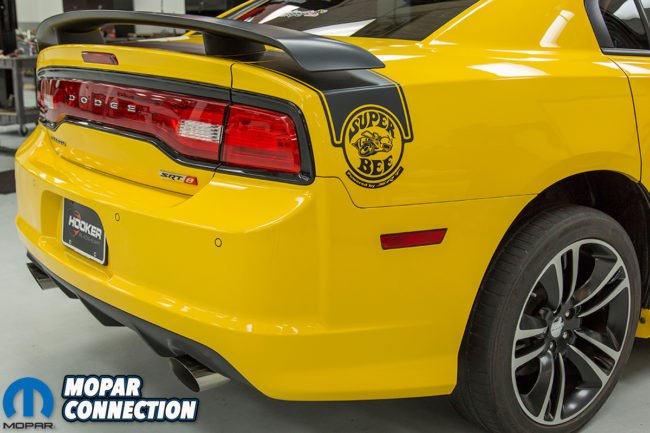



















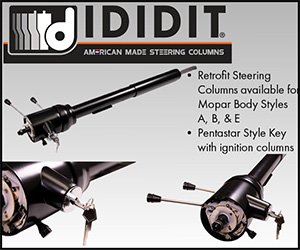

 Mopar Connection Magazine – The ONLY Daily Mopar Magazine © 2022. All Rights Reserved. Mopar Connection Magazine is the ONLY daily Mopar Magazine bringing you the latest Mopar news, technology, breaking news, and Mopar related events and articles. Find out the latest information about Mopar, Mopar products and services, stay up to date on Mopar enthusiast news, dealership information and the latest Mopar social media buzz! Sign up for the Mopar Connection Magazine newsletter for the latest information about new products, services and industry chatter. Mopar Connection Magazine is the best and only source you need to be a Mopar industry insider!
Mopar Connection Magazine – The ONLY Daily Mopar Magazine © 2022. All Rights Reserved. Mopar Connection Magazine is the ONLY daily Mopar Magazine bringing you the latest Mopar news, technology, breaking news, and Mopar related events and articles. Find out the latest information about Mopar, Mopar products and services, stay up to date on Mopar enthusiast news, dealership information and the latest Mopar social media buzz! Sign up for the Mopar Connection Magazine newsletter for the latest information about new products, services and industry chatter. Mopar Connection Magazine is the best and only source you need to be a Mopar industry insider! by
by